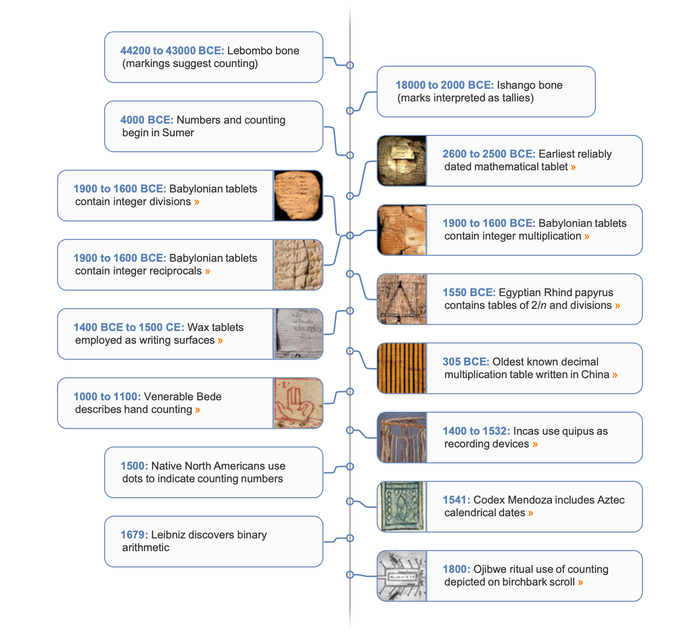Funding for this project generously provided by Overdeck Family Foundation
Counting
While numbers and counting predate civilization, their modern use and development coincides with the rise of cities and their associated needs for record keeping and the organization of people and supplies. From their origins as tally marks on bones, finger counting and counting tokens, the representation, use and computation of numbers have become increasingly important as civilizations have advanced from the primitive to the modern technological world.
-

around 2600–2500 BCE
Sumerian Earliest Known Math Table
World's oldest reliably dated mathematical table
-

around 1900–1600 BCE
Babylonian Reciprocals Tablet
Old Babylonian reciprocal table (with errors)
-

around 1900–1600 BCE
Babylonian School Multiplication Tablet
Ancient multiplication exercises—with teacher and student errors
-

around 1900–1600 BCE
Sumerian 7 Quotient and 10 Product Tablet
Reciprocals and multiplication by 7 and 10 in cuneiform
-

around 305 BCE
Bamboo-Strip Multiplication Table
Oldest known decimal multiplication table
-

around 70 CE
Roman Stylus Tablet
Sequential Roman numerals on a wax tablet
-

1000–1100 CE
Venerable Bede's De temporum ratione
From finger counting to astronomical time calculation
-

around 1400–1532
South American Quipu
Knots upon knots to count and record
-

1541
Aztec Dates from Codex Mendoza
Aztec calendrical dates using pictograms and dots
-

around 1800
Midewiwin Birchbark Scroll
Sequential counting on a birchbark scroll
Timeline
